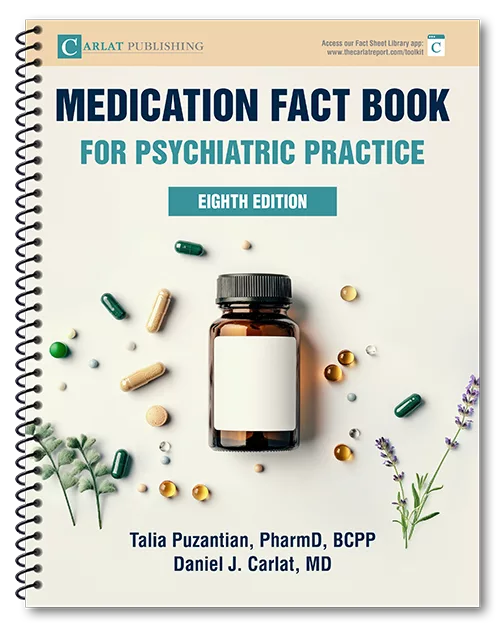Home » Samuel H. Barondes, M.D., on Genetic Research in Psychiatry
Samuel H. Barondes, M.D., on Genetic Research in Psychiatry
November 1, 2005
From The Carlat Psychiatry Report
 Samuel H. Barondes, M.D.
Jeanne and Sanford Robertson
Professor of Psychiatry
Director of the Center for Neurobiology and Psychiatry
University of California, San Francisco School of Medicine
Author, Mood Genes and Better than Prozac
Dr. Barondes has disclosed that he has no significant relationships with or financial interests in any commercial companies pertaining to this educational activity.
Samuel H. Barondes, M.D.
Jeanne and Sanford Robertson
Professor of Psychiatry
Director of the Center for Neurobiology and Psychiatry
University of California, San Francisco School of Medicine
Author, Mood Genes and Better than Prozac
Dr. Barondes has disclosed that he has no significant relationships with or financial interests in any commercial companies pertaining to this educational activity.TCR: Obviously, genetics and psychiatry is a huge topic. But let’s begin with a simple question. What does heritability mean?
Dr. Barondes: Heritability refers to the percentage of the variance of a trait that is attributable to genes.
TCR: And how is it computed?
Dr. Barondes: The most common way is by comparing the concordance between monozygotic, or identical, twins (who are genetically identical), with the concordance between same-sex dizygotic twins (fraternal twins), who are 50 percent genetically identical.
TCR: And why is this comparison used?
Dr. Barondes: Because this comparison allows you to distinguish what is due purely to genetic causes from what is due to environmental causes. Theoretically, all twins, whether monozygotic or dizygotic, share more or less the same type of environmental exposure with their brother or sister. So if some trait were purely caused by the environment – like, say, by the educational level of the parents – you’d expect the concordance between twins to be the same, regardless of whether they shared all their genes or not. However, if some trait were partly caused by genes (like height), then you’d expect the concordance rate to be higher in monozygotic twins than in dizygotic twins. Roughly speaking, the difference between the concordance rates is taken to be a pretty good measure of the effects of shared genes. Now, of course you can argue about whether identical twins are treated more similarly to one another than fraternal twins, but the bottom line is that this is a common and simple way to at least get a reasonable estimate of heritability.
TCR: So how is this method used in studying schizophrenia?
Dr. Barondes: Let’s say that you study hundreds of sets of monozygotic twins, and one of the twins is known to have schizophrenia; let’s say you find that fifty percent of the other monozygotic twins also have schizophrenia. Fifty percent is hugely more than the 1 percent prevalence in the general population, so this already looks very heritable. But what about dizygotic twins? Well, when you look at dizygotic twins, you find a concordance rate of about 10 percent – that is, only one in ten of the co-twins has schizophrenia.
TCR: So genes seem to play more of a role in monozygotic twins. How does that translate to a heritability estimate?
Dr. Barondes: Here’s how. The difference between 10 percent and 50 percent is 40 percent, or 0.4.
TCR: Meaning that schizophrenia has a heritability of 40%?
Dr. Barondes: No, not quite. Since the monozygotic twins have all their genes the same, and the dizygotic twins have half their genes the same, if you want to know what having “total genes the same” contributes to the variance, you multiply by two because the comparison group, the dizygotic twins, already have 50 percent of their genes the same. If you took the 40% figure without making that adjustment, you would be underestimating the role of genes. So bottom line is you multiply by two, and two times 40% yields an estimate of 80% heritability for schizophrenia, which is the number that is usually thrown around.
TCR: So, if I have a patient who has a parent who is schizophrenic and he is asking, “what are my chances of getting schizophrenia,” and I were to say the data shows that schizophrenia is 80 % heritable, the patient would probably assume, I guess wrongly, that he therefore has an 80 % chance of becoming schizophrenic. So why would he be mistaken?
Dr. Barondes: Because heritability refers to the variance within a population, and doesn’t refer to risk of genetic transmission to a specific individual. Put simply, saying schizophrenia is 80% heritable means that genes account for 80% of the causation of schizophrenia in the population. That doesn’t mean that having a parent with schizophrenia means you have an 80% chance of getting the disorder. Even with a disorder such as Huntington’s disease, in which heritability is 100% (100% of the causation in the population is genetic – nothing else matters), the risk to a child is only 50%, not 100%. The reason for this is that for this single gene type of genetic disease we know that the affected parent has one dominant “bad gene” which causes the disease and another perfectly good gene that is powerless in the face of the bad gene. Therefore, each child has only a 50/50 chance of inheriting the bad gene from the affected parent. So in this case heritability is 100% but individual risk is only 50%. With complex genetic disorders such as schizophrenia, in which many gene variants are involved in influencing the risk to a particular individual, the way to get an estimate of risk is empirical. What I mean by that is that you do an epidemiological study of the children of people with schizophrenia and find out what percentage actually have schizophrenia. Studies like this show that roughly ten percent of the children of a person with schizophrenia develop that disorder. So you can tell the person who is making the inquiry that, based on data of this kind, their chances of getting the disorder are about one in ten.
TCR: The background to this entire discussion is that there has been a longstanding fight in psychiatry, “nature vs. nurture,” in which some people take a stand that psychological/environmental factors are more important and others that genetic factors are more important. And then in the ‘80s and ‘90s we saw a series of research studies proclaiming to have found the gene for bipolar disorder, only to see subsequent studies retracting that finding. Because of this, there is a sense of skepticism that there is a genetic basis for mental illness at all. Can you explain why these studies are so hard to do and to replicate?
Dr. Barondes: The traditional way to do genetic studies is to find large families in which many members have the disease. You then compare the DNA of affected people with the DNA of their unaffected relatives to find what bits of DNA the affected people share, and then scrutinize the relevant bits for the gene of interest. This is called a linkage study, and works well for certain disorders. Unfortunately it doesn’t work well for the common psychiatric disorders such as schizophrenia or bipolar disorder.
TCR: In principle, this sounds simple, but in practice, finding shared genes must be like looking for a needle in a mountain of haystacks, since there are many thousands of genes.
Dr. Barondes: Right, and that’s where the term “linkage” in “genetic linkage studies” comes in. We have good techniques for finding certain genetic patterns, or markers, that can then be linked to those members of the family who are affected. We use these markers to gradually localize the relevant variant of the gene.
TCR: Why has it been so hard to do these studies for psychiatric disorders?
Dr. Barondes: There are four reasons: First, it’s hard to find big enough families to get enough statistical power. Second, psychiatric disorders are hard to diagnose reliably, and when even a single family member is misdiagnosed, that can throw off the results of the entire study. Third, psychiatric disorders are not single gene disorders, but are complex polygenic disorders, meaning that it requires the inheritance of multiple gene variants – say variant A of gene 1, variant C of gene 2 and variant F of gene 3 – plus certain environmental factors to produce the disorder. And finally, there may be many different gene variants – including, for example, combinations of variant A of gene 1 with variant B of gene 4 and variant M of gene 6 – that can lead to the same disorder.
TCR: What are the most current techniques?
Dr. Barondes: The major thrust nowadays is to move away from the linkage analysis approach because of the difficulties that I have outlined, and to shift to what are called case-controlled studies where you are working with very large numbers in a population and doing elaborate total genome screens. You collect DNA samples from many thousands of people with a disorder such as schizophrenia or bipolar disorder and compare them with DNA samples of thousands of controls all derived from the same gene pool. The goal is to find out what gene variants are more common in the affected people that in the controls. And the good news is that DNA analysis has become so cheap and automated that it is practical to look at thousands and thousands of variations in the genome of every single person in the study. You get this massive amount of data, put it into a computer, and use various algorithms to find out what is shared by the people with the disorder that is not shared by the people without the disorder. The hope is that this approach will lead us to some of the gene variants that are involved. And when that succeeds we will be in a position to find out what each of the relevant gene variants does to brain function – which promises to be the next challenging task. This all should work, in time. But I hope it is now clear why it has been such slow going.
TCR: Thank you Dr. Barondes.
General PsychiatryDr. Barondes: Heritability refers to the percentage of the variance of a trait that is attributable to genes.
TCR: And how is it computed?
Dr. Barondes: The most common way is by comparing the concordance between monozygotic, or identical, twins (who are genetically identical), with the concordance between same-sex dizygotic twins (fraternal twins), who are 50 percent genetically identical.
TCR: And why is this comparison used?
Dr. Barondes: Because this comparison allows you to distinguish what is due purely to genetic causes from what is due to environmental causes. Theoretically, all twins, whether monozygotic or dizygotic, share more or less the same type of environmental exposure with their brother or sister. So if some trait were purely caused by the environment – like, say, by the educational level of the parents – you’d expect the concordance between twins to be the same, regardless of whether they shared all their genes or not. However, if some trait were partly caused by genes (like height), then you’d expect the concordance rate to be higher in monozygotic twins than in dizygotic twins. Roughly speaking, the difference between the concordance rates is taken to be a pretty good measure of the effects of shared genes. Now, of course you can argue about whether identical twins are treated more similarly to one another than fraternal twins, but the bottom line is that this is a common and simple way to at least get a reasonable estimate of heritability.
“Heritability refers to the variance within a population, and doesn’t refer to risk of genetic transmission to a specific individual. Put simply, saying schizophrenia is 80% heritable means that genes account for 80% of the causation of schizophrenia in the population. That doesn’t mean that having a parent with schizophrenia means you have an 80% chance of getting the disorder.”
– Samuel H. Barondes, M.D.
TCR: So how is this method used in studying schizophrenia?
Dr. Barondes: Let’s say that you study hundreds of sets of monozygotic twins, and one of the twins is known to have schizophrenia; let’s say you find that fifty percent of the other monozygotic twins also have schizophrenia. Fifty percent is hugely more than the 1 percent prevalence in the general population, so this already looks very heritable. But what about dizygotic twins? Well, when you look at dizygotic twins, you find a concordance rate of about 10 percent – that is, only one in ten of the co-twins has schizophrenia.
TCR: So genes seem to play more of a role in monozygotic twins. How does that translate to a heritability estimate?
Dr. Barondes: Here’s how. The difference between 10 percent and 50 percent is 40 percent, or 0.4.
TCR: Meaning that schizophrenia has a heritability of 40%?
Dr. Barondes: No, not quite. Since the monozygotic twins have all their genes the same, and the dizygotic twins have half their genes the same, if you want to know what having “total genes the same” contributes to the variance, you multiply by two because the comparison group, the dizygotic twins, already have 50 percent of their genes the same. If you took the 40% figure without making that adjustment, you would be underestimating the role of genes. So bottom line is you multiply by two, and two times 40% yields an estimate of 80% heritability for schizophrenia, which is the number that is usually thrown around.
TCR: So, if I have a patient who has a parent who is schizophrenic and he is asking, “what are my chances of getting schizophrenia,” and I were to say the data shows that schizophrenia is 80 % heritable, the patient would probably assume, I guess wrongly, that he therefore has an 80 % chance of becoming schizophrenic. So why would he be mistaken?
Dr. Barondes: Because heritability refers to the variance within a population, and doesn’t refer to risk of genetic transmission to a specific individual. Put simply, saying schizophrenia is 80% heritable means that genes account for 80% of the causation of schizophrenia in the population. That doesn’t mean that having a parent with schizophrenia means you have an 80% chance of getting the disorder. Even with a disorder such as Huntington’s disease, in which heritability is 100% (100% of the causation in the population is genetic – nothing else matters), the risk to a child is only 50%, not 100%. The reason for this is that for this single gene type of genetic disease we know that the affected parent has one dominant “bad gene” which causes the disease and another perfectly good gene that is powerless in the face of the bad gene. Therefore, each child has only a 50/50 chance of inheriting the bad gene from the affected parent. So in this case heritability is 100% but individual risk is only 50%. With complex genetic disorders such as schizophrenia, in which many gene variants are involved in influencing the risk to a particular individual, the way to get an estimate of risk is empirical. What I mean by that is that you do an epidemiological study of the children of people with schizophrenia and find out what percentage actually have schizophrenia. Studies like this show that roughly ten percent of the children of a person with schizophrenia develop that disorder. So you can tell the person who is making the inquiry that, based on data of this kind, their chances of getting the disorder are about one in ten.
TCR: The background to this entire discussion is that there has been a longstanding fight in psychiatry, “nature vs. nurture,” in which some people take a stand that psychological/environmental factors are more important and others that genetic factors are more important. And then in the ‘80s and ‘90s we saw a series of research studies proclaiming to have found the gene for bipolar disorder, only to see subsequent studies retracting that finding. Because of this, there is a sense of skepticism that there is a genetic basis for mental illness at all. Can you explain why these studies are so hard to do and to replicate?
Dr. Barondes: The traditional way to do genetic studies is to find large families in which many members have the disease. You then compare the DNA of affected people with the DNA of their unaffected relatives to find what bits of DNA the affected people share, and then scrutinize the relevant bits for the gene of interest. This is called a linkage study, and works well for certain disorders. Unfortunately it doesn’t work well for the common psychiatric disorders such as schizophrenia or bipolar disorder.
TCR: In principle, this sounds simple, but in practice, finding shared genes must be like looking for a needle in a mountain of haystacks, since there are many thousands of genes.
Dr. Barondes: Right, and that’s where the term “linkage” in “genetic linkage studies” comes in. We have good techniques for finding certain genetic patterns, or markers, that can then be linked to those members of the family who are affected. We use these markers to gradually localize the relevant variant of the gene.
TCR: Why has it been so hard to do these studies for psychiatric disorders?
Dr. Barondes: There are four reasons: First, it’s hard to find big enough families to get enough statistical power. Second, psychiatric disorders are hard to diagnose reliably, and when even a single family member is misdiagnosed, that can throw off the results of the entire study. Third, psychiatric disorders are not single gene disorders, but are complex polygenic disorders, meaning that it requires the inheritance of multiple gene variants – say variant A of gene 1, variant C of gene 2 and variant F of gene 3 – plus certain environmental factors to produce the disorder. And finally, there may be many different gene variants – including, for example, combinations of variant A of gene 1 with variant B of gene 4 and variant M of gene 6 – that can lead to the same disorder.
TCR: What are the most current techniques?
Dr. Barondes: The major thrust nowadays is to move away from the linkage analysis approach because of the difficulties that I have outlined, and to shift to what are called case-controlled studies where you are working with very large numbers in a population and doing elaborate total genome screens. You collect DNA samples from many thousands of people with a disorder such as schizophrenia or bipolar disorder and compare them with DNA samples of thousands of controls all derived from the same gene pool. The goal is to find out what gene variants are more common in the affected people that in the controls. And the good news is that DNA analysis has become so cheap and automated that it is practical to look at thousands and thousands of variations in the genome of every single person in the study. You get this massive amount of data, put it into a computer, and use various algorithms to find out what is shared by the people with the disorder that is not shared by the people without the disorder. The hope is that this approach will lead us to some of the gene variants that are involved. And when that succeeds we will be in a position to find out what each of the relevant gene variants does to brain function – which promises to be the next challenging task. This all should work, in time. But I hope it is now clear why it has been such slow going.
TCR: Thank you Dr. Barondes.

Issue Date: November 1, 2005
Table Of Contents
Recommended
Newsletters
Please see our Terms and Conditions, Privacy Policy, Subscription Agreement, Use of Cookies, and Hardware/Software Requirements to view our website.
© 2025 Carlat Publishing, LLC and Affiliates, All Rights Reserved.


_-The-Breakthrough-Antipsychotic-That-Could-Change-Everything.webp?t=1729528747)



